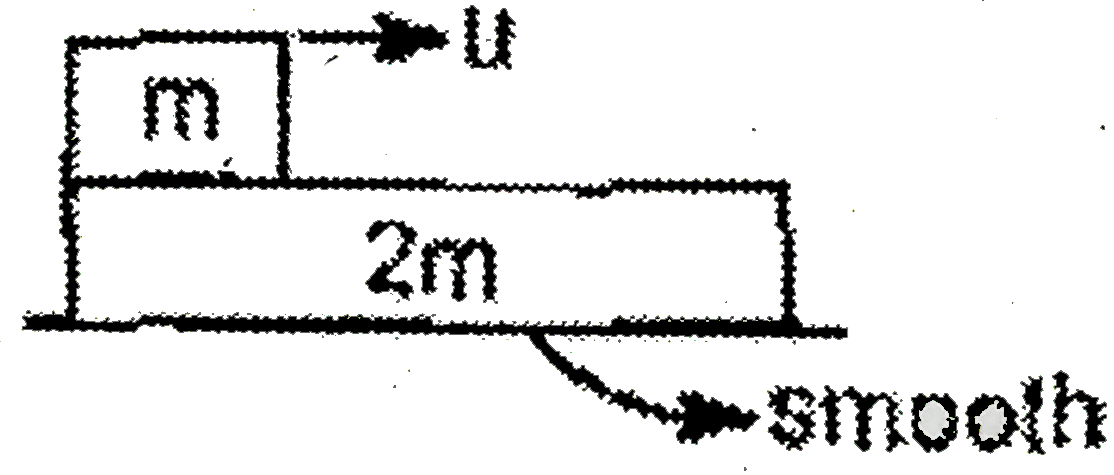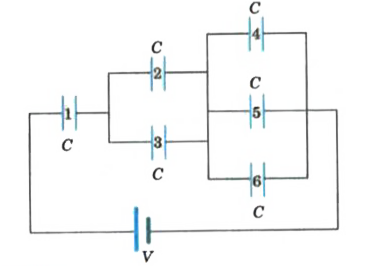Find total work done by friction assuming plank is sufficiently long.
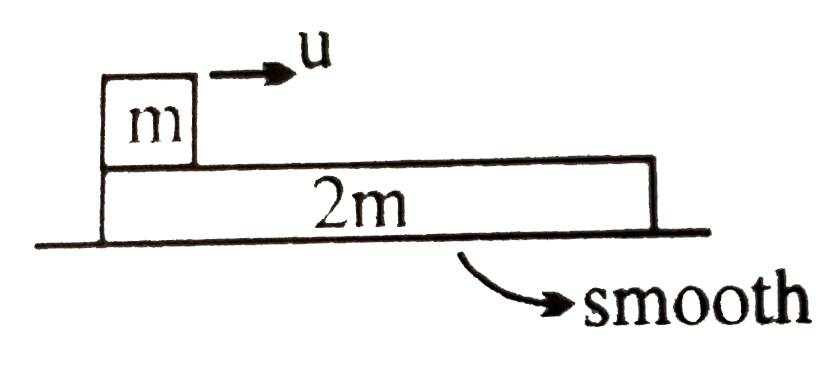
Solve this question in both ground frame and C-frame.
In ground frame:
let v be the final velocity of block & plank when relative motion ceases between block and plank,
applying conservation of linear momentum, mu=(2m+m)v
∴ v=u/3
wf=change in K.E.=K.E.f−K.E.i
wf=12−3m(u3)2−12mu2=−mu23
In C-frame:
Considering block and plank as system
Work done by friction is change in kinetic energy
wf=change in K.E.=K.E.f−K.E.i
K.E.i=12μ(u−0)2+(2m+m)v2c2 (μ=2m×m2m+m)
K.E.f=0+(2m+m)v2c2 (vc is constant as external force is zero)
wf=K.E.f−K.E.i=−mu23
Note: Psys= conserved if fext.=0 although internal friction are doing work.
Topper's Solved these Questions
- CENTRE OF MASS & MOMENTUM CONSERVATIONBOOK - BANSALCHAPTER - CENTRE OF MASS & MOMENTUM CONSERVATIONEXERCISE - Solved Examples
15 Videos
- CENTRE OF MASS & MOMENTUM CONSERVATIONBOOK - BANSALCHAPTER - CENTRE OF MASS & MOMENTUM CONSERVATIONEXERCISE - Practice Exercise
20 Videos
- GRAVITATIONBOOK - BANSALCHAPTER - GRAVITATIONEXERCISE - EXERCISE -4 Section - B
6 Videos
Similar Questions
Knowledge Check
Assertion : It is possible that work done by a force on an object is different for different observes .
Reason : Work done by a force depends on frame of reference of observer .AIf both assertion and reason are corret and reason is a correct explanation of the assertion .BIf both assertion and reason are correct but reason is ot the correct explanation of assertion .CIf assertion is correct but reason is incorrect .DIf both assertion and reason are incorrect .A block of 1 kg is kept on a rough surface of an elevator moving up with constant velocity of 5 m/s. In 10 second work done by normal reaction (no sliding on incline surface)
(i) from ground frame is 320 J
(ii) is equal to work done by friction force in elevator frame
(iii) is equal to work done by friction in ground frameA(i)B(ii), (iii)C(i), (ii)Donly (iii).
A small disc of mass m slides down a smooth hill of height h without initial velocity and gets onto a plank of mass M lying on the horizontal plane at the base of the hill. (figure). Due to friction between the disc and the plank the disc slows down and, beginning with a certain moment, moves in one piece with the plank.
(1) Find the total work performed by the friction forces in this process.
(2) Can it be stated that the result of obtained does not depend on the choice of the reference frame?

View SolutionBlock A of mass m is placed over a wedge of same mass m. Both the block and wedge are placed on a fixed inclined plane. Assuming all surfaces to be smooth calculate the displacement of the block A in ground frame in 1s.

View SolutionFigure shows a pendulum suspended from the roof of a car that has a constant acceleration a relative to the ground. Find the deflection of the pendulum from the vertical as observed from the ground frame and from the frame attached with the car.
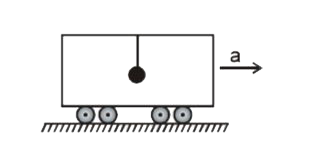
View SolutionAn equilateral triangular frame with side a carrying a current I is placed at a distance a from an infinitely long straight wire carrying a current I as shown in the figure. One side of the frame isparallel to the wire. The whole system lies in the xy-plane. Find the magnetic force F acting on the frame.
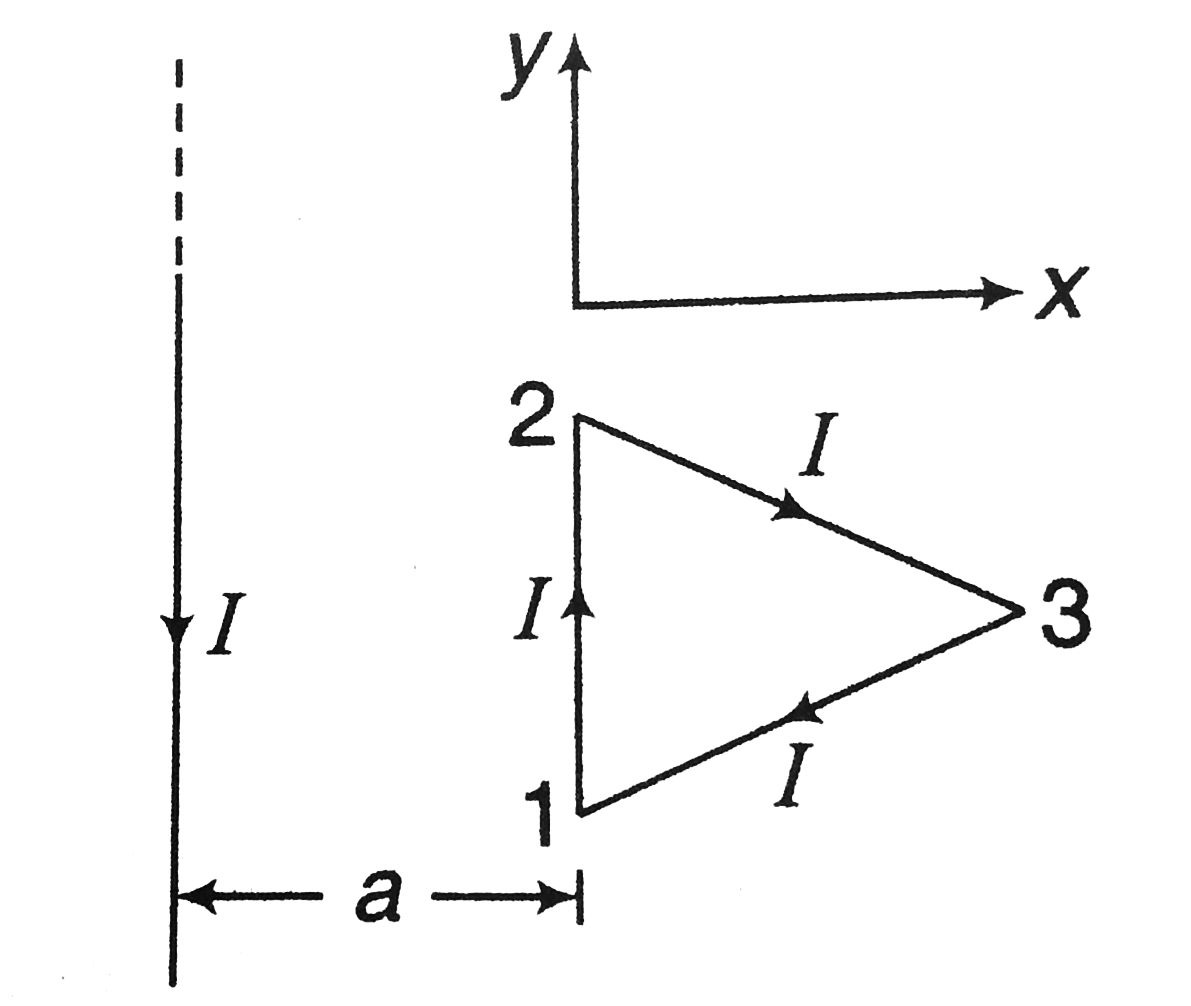
View SolutionA block of mass m is connected with a rigid wall by light spring of stiffness k. Initially the spring is relaxed.

If the block is pushed with a velocity v0, it oscillates back and forth and stops. Assuming μ as the coefficient of kinetic friction between block and ground, find the work done by friction till the block stops.
View SolutionIn the shown figure.
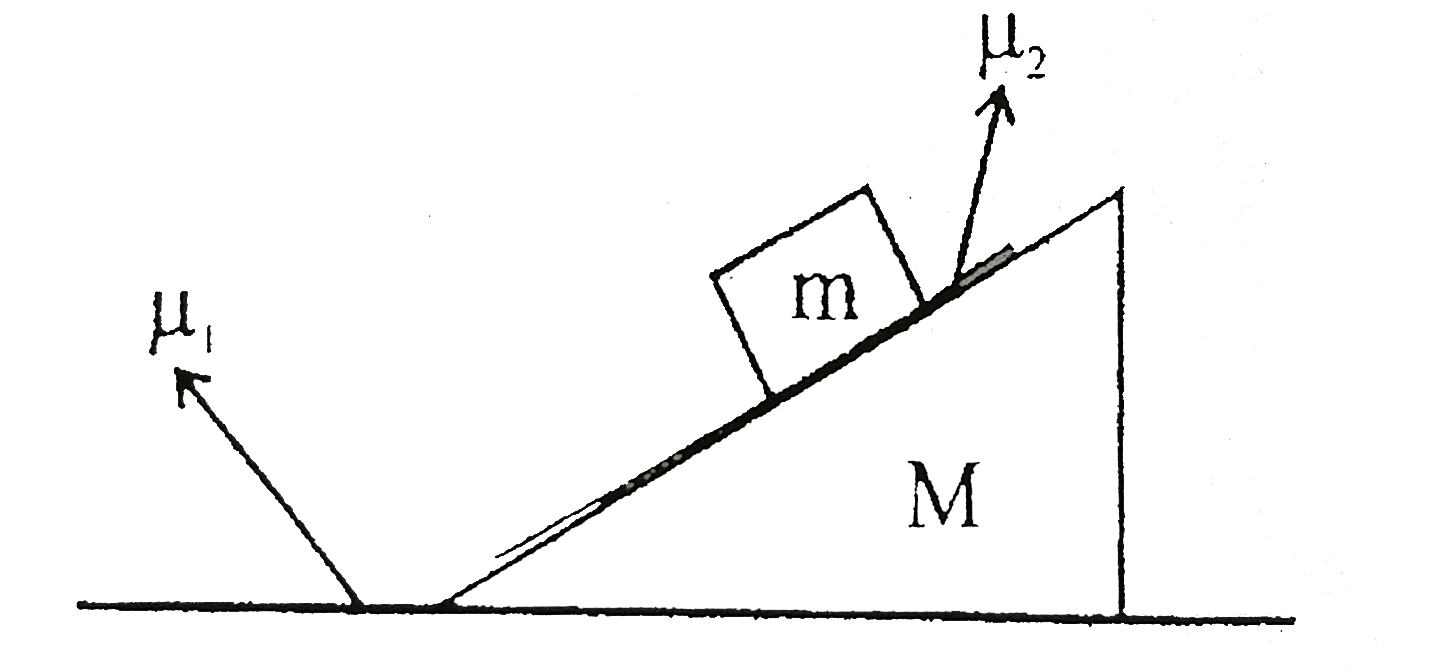
Column IColumn II(A)if μ1=0,μ=0, then for block m(P)Work dine by normal force between the wedge and block is always positive in ground frame.(B)ifμ1=0,μ2=0, then for wedge M.(Q)Work done by normal force between the wedge and block is always negative or zero in ground frame.(C)if μ1≠0,μ1=0, then for block m.(R)Work done by constact force between the wedge and block is always negative in ground frame.(S)Work done by friction force betwen the wedge and ground is always negative in ground frame.
View Solution

